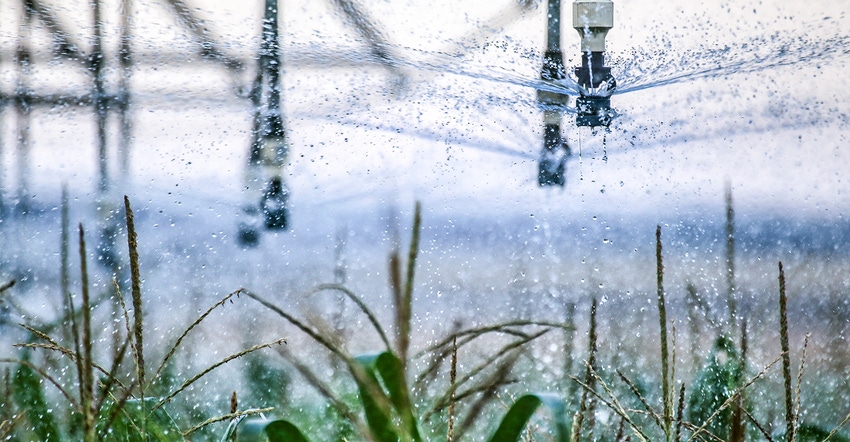August 10, 2018

Corn silage is a valuable crop across the country. It provides an efficient forage source for beef and dairy cattle, and can be produced using the latest mechanical methods. Add in irrigation, and farmers are finding ways to boost production. A new report from the University of Wyoming provides insight into irrigation systems, nitrogen use and yield.
The researchers looked at information on irrigation approaches for sprinkler, subsurface drip and on-surface drip irrigation to determine the impact on yield and nitrogen use. Corn silage requires adequate water, nutrients and management to produce. But managing those inputs to maximize returns is increasingly important.
The researchers looked at applying water to match 100% of crop evapotranspiration, or ETc, 80% of ETc and 60% of ETc. Liquid N fertilizer was sidedressed as urea ammonium nitrate at the V3 growth stage at 0, 80, 160, 240 and 320 pounds per acre. Under the sprinkler setup, only 80, 160 and 240 pounds of N were applied.
The report looks at three seasons of data from the Powell Research and Extension Center using the three irrigation treatments.
The report looked at those treatments, and their impact on yield and water efficiency. They found that at 100% ETc and 80% ETc, there was little yield difference — which offers some potential water-saving for the future. However, dropping irrigation to 60% ETc showed as much as a 40% drop in silage yield over the three seasons.
Nitrogen application, as most farmers would expect, did impact yield. However, the yield difference between 160 pounds per acre and 320 pounds per acre was not high, showing that 160 pounds of N per acre was beneficial for production.
You can download the six-page report for more information at wyoextension.org/publications; search for publication B-1326.
Source: University of Wyoming
You May Also Like




